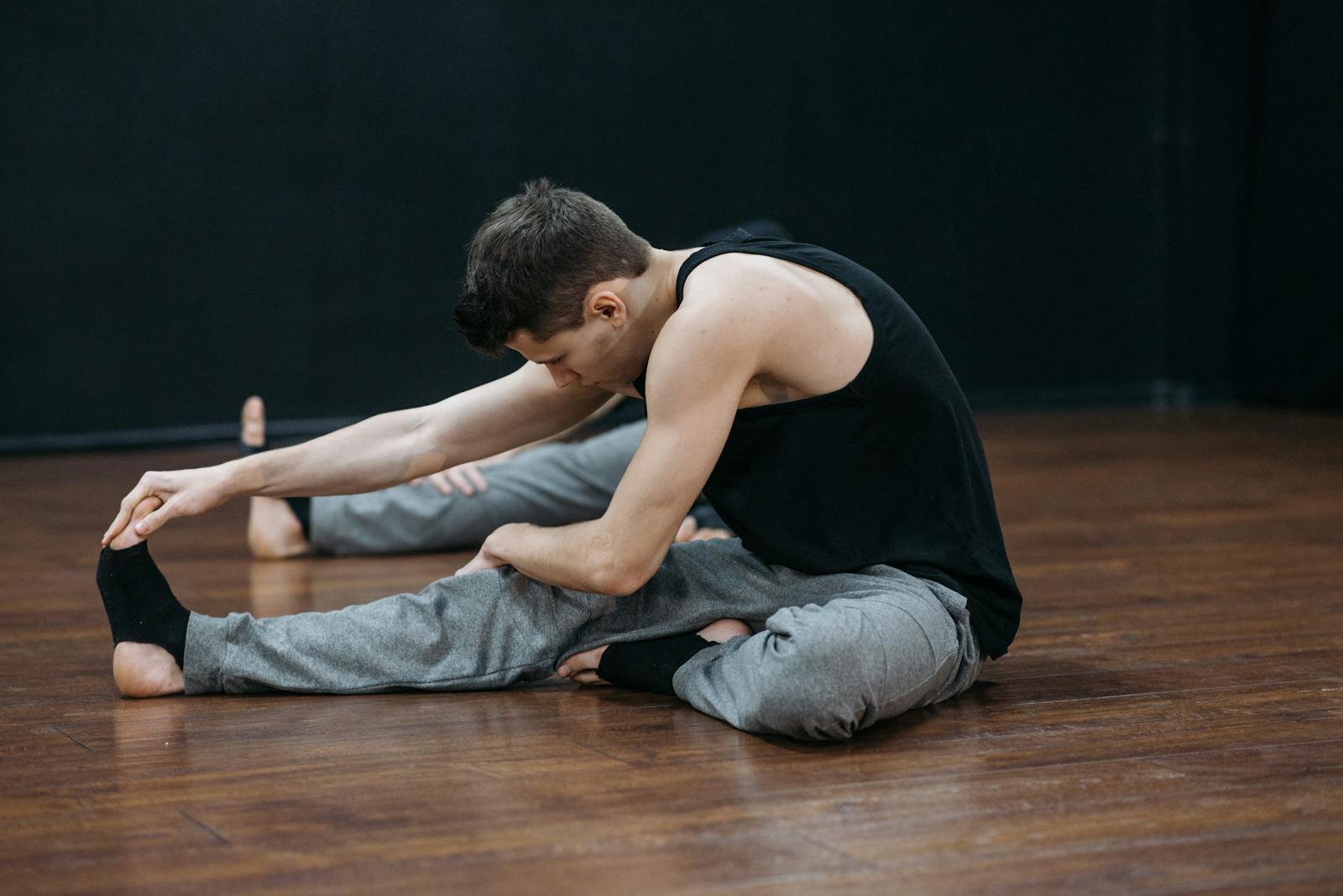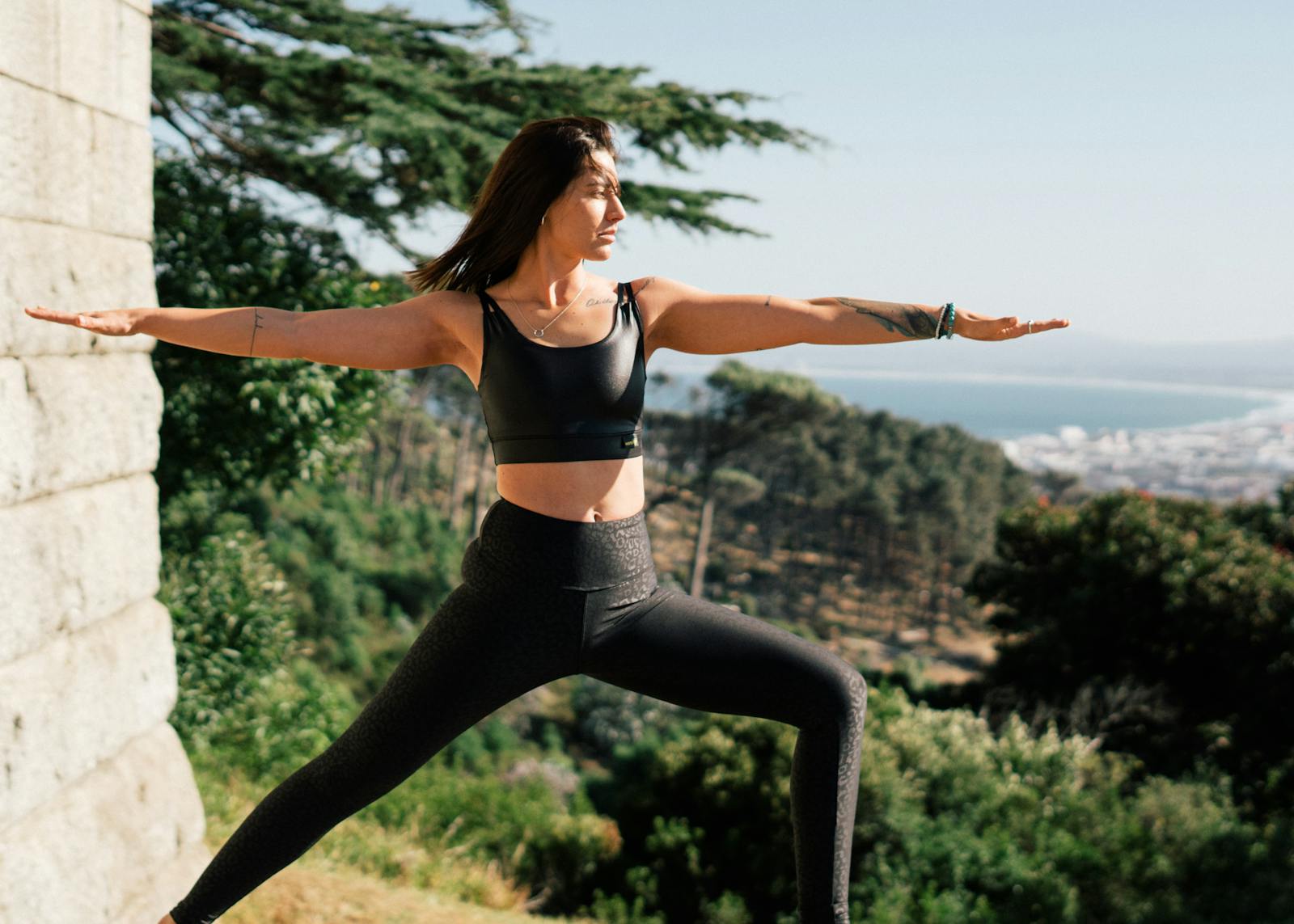Shoulder blade stretches, while often overlooked, play a crucial role in maintaining upper body health and preventing injuries. By focusing on key muscles such as the trapezius, rhomboids, and deltoids, these stretches can greatly improve shoulder flexibility and mobility. However, the potential benefits of these exercises extend beyond mere physicality. Could integrating shoulder blade stretches into your daily routine enhance not only your physical well-being but also impact your overall productivity and quality of life? We invite you to explore this intriguing possibility further.
Understanding Shoulder Blade Anatomy
To fully appreciate the benefits of shoulder blade stretches, it is important to understand the complex anatomy of the shoulder blade, also known as the scapula. This triangular bone plays a pivotal role in the overall function of the shoulder, constituting an integral part of the scapular structure.
The scapula is remarkable for its two main processes – the acromion and the coracoid. The acromion process articulates with the collarbone, forming the acromioclavicular joint, while the coracoid process serves as an attachment site for several muscles.
In terms of muscular attachments, the scapula forms a mutual relationship with a collection of muscles, including the trapezius, rhomboids, levator scapulae, and the serratus anterior. These muscles facilitate the scapula’s ability to perform a diverse range of movements, such as elevation, depression, protraction, retraction, upward and downward rotation. Importantly, the health and flexibility of these muscles significantly influence the scapula’s functional capacity.
The Importance of Shoulder Flexibility
Maintaining excellent shoulder flexibility is essential as it greatly impacts the range of motion and overall functionality of this complex joint. This flexibility is intrinsically linked to rotator cuff health, a group of muscles and tendons that provide stability and movement to the shoulder. Reduced flexibility can lead to strain on the rotator cuff, potentially causing injuries that impair daily activities and limit athletic performance.
Enhanced shoulder flexibility also contributes to posture correction. An upright posture, facilitated by flexible shoulders, is critical for ideal respiratory and cardiovascular function. It reduces the risk of developing chronic conditions such as kyphosis, a forward rounding of the back. Moreover, it aids in balancing the body’s weight, reducing the burden on the lower back and mitigating the risk of related discomfort or injury.
Shoulder Stretching Precautions
While shoulder blade stretches can greatly enhance flexibility and overall shoulder health, it is important to take certain precautions to avoid injury. Understanding the potential risks associated with improper stretching techniques is essential. Moreover, the implementation of safe, effective stretching methods can amplify benefits while reducing harm.
Understanding Stretching Risks
Despite the many health benefits associated with shoulder blade stretches, it is essential to understand the potential risks and precautions to guarantee safe and effective exercise. Mismanaged stretching exercises can lead to stretching injuries, such as muscle strains or more severe damage like a torn rotator cuff. The key to injury prevention lies in recognizing these risks. Overstretching, improper form, or neglecting a good warm-up can heighten the risk of injury. Additionally, individuals with pre-existing shoulder conditions should be extra cautious as they are more susceptible to injuries. In such cases, professional guidance is highly recommended. Therefore, being informed about potential risks and implementing appropriate precautions can ensure the effectiveness of shoulder blade stretches while minimizing injury risks.
Safe Stretching Techniques
To guarantee the safe and effective execution of shoulder blade stretches, it is crucial to follow certain precautionary methods and techniques. These methods ensure that the exercises are beneficial and do not lead to injury.
- Always warm up before starting your stretching routine.
- Use proper Stretching Equipment to support your body and enhance your stretches.
- Consider Partner Assisted Stretches, where a second person can provide additional support and control.
- Maintain a proper form throughout the stretch to target the right muscles and prevent strain on others.
- Listen to your body and stop if you feel any pain.
Basic Shoulder Blade Stretch Techniques
The effectiveness of shoulder blade stretches is heavily reliant on the comprehension of the underlying shoulder blade anatomy. It is equally important to identify and avoid common mistakes made during these stretches for an ideal outcome. Lastly, we will discuss the most effective techniques that can be integrated into a regular stretching routine for the best results.
Understanding Shoulder Blade Anatomy
Delving into the complex structure of the shoulder blade, one learns that it plays a pivotal role in arm movements and needs regular stretching for peak functionality. The scapula structure is intricate, housing several muscular connections that allow for a wide range of movement.
To understand this better, consider the following:
- The shoulder blade, or scapula, is a triangular bone that connects the upper arm bone to the collarbone.
- Muscles such as the trapezius and rhomboids attach to the scapula, facilitating arm lifting and rotation.
- The scapula has a socket that holds the ball of the upper arm bone, forming the shoulder joint.
- The scapula’s edge, or medial border, is important for muscle attachment and movement.
- The superior and inferior angles of the scapula contribute to the complex range of shoulder motion.
Understanding scapula anatomy aids in effective shoulder blade stretches.
Common Stretching Mistakes
In the domain of shoulder blade stretching, common mistakes can often impede progress, undermine effectiveness, and potentially lead to injuries. One of the prevalent stretching misconceptions is the belief that pain equals progress. When stretching, discomfort is normal, but pain is a clear signal that your body is being pushed too far. Overstretching not only hinders flexibility gains but also poses a significant risk of injury. Another common mistake is neglecting proper form. Incorrect alignment during stretches can strain muscles and ligaments, leading to potential injuries. To foster effective stretching and injury prevention, it is essential to understand and avoid these common errors. Remember, the goal of stretching should be to enhance mobility and promote overall health, not to induce pain or injury.
Effective Stretch Techniques
Several essential techniques, when performed correctly, can greatly enhance shoulder blade flexibility and mobility. It’s vital to take into account two key factors: stretching duration and stretching frequency.
Here are five effective techniques:
- Doorway stretch: Position yourself in an open doorway, place your arms on the door frame and lean in to stretch your shoulder blades.
- Overhead stretch: Reach your arms up high and push your hands back to stretch your shoulder blades.
- Cross-body stretch: Pull one arm across your chest to stretch the shoulder blade.
- Neck releases: Tilt your head towards your shoulder and hold, then repeat on the other side.
- Pendulum stretch: Lean over and allow your arm to hang down, then gently swing it to stretch the shoulder blade.
Remember to maintain each stretch for an appropriate duration and repeat them with an ideal frequency to see improvement.
Stretch: Cross-Body Reach
The Cross-Body Reach is an effective shoulder blade stretch that promotes flexibility and reduces muscle tension. This simple yet powerful stretch primarily targets the posterior deltoids, a muscle group located in the back of the shoulder, which is vital for numerous upper body movements. By incorporating the Cross-Body Reach into your fitness routine, you can increase your stretch intensity gradually, enhancing overall shoulder health and functionality.
The Cross-Body Reach is not only a tool for flexibility but also a means of injury prevention. Consistently practicing this stretch can help prevent shoulder impingements, rotator cuff tears, and other common upper body injuries. The key to maximizing the benefits of this stretch lies in the technique. The arm should be extended across the chest while the other arm gently pulls it closer, creating tension across the shoulder blade. It is essential to hold the stretch for an adequate amount of time, usually around 20-30 seconds, and repeat it for both sides.
Stretch: Overhead Triceps Stretch
The Overhead Triceps Stretch is an essential component of shoulder blade stretching routines, offering distinct benefits. When executed correctly, this stretch can greatly enhance flexibility and mobility, while also reducing muscle tightness. However, it’s important to understand common pitfalls associated with this exercise to guarantee maximum effectiveness and prevent potential injury.
Executing the Triceps Stretch
Engaging in the Overhead Triceps Stretch, a profound shoulder blade exercise, demands meticulous attention to form to guarantee effectiveness and prevent injury. This stretch primarily focuses on Triceps function and plays a key role in Triceps strengthening.
To perform this stretch appropriately, consider the following steps:
- Stand or sit upright, then extend one arm overhead.
- Bend your elbow so that your hand is reaching towards the opposite shoulder blade.
- Use your other hand to gently pull the elbow toward the midline.
- Hold the stretch for 15-30 seconds and repeat on the other side.
- Avoid leaning or moving your back during the exercise for maximum efficiency.
Executing the Overhead Triceps Stretch correctly can contribute significantly to shoulder blade flexibility and overall upper body strength.
Benefits of Overhead Stretch
Incorporating the Overhead Triceps Stretch into a regular fitness regimen offers multifaceted benefits, primarily enhancing shoulder mobility and upper body strength. The Overhead Stretch Impact is significant, as continuous practice can lead to greater flexibility, reduced muscle tension, and improved posture. This stretch can relieve discomfort in the neck and upper back, areas that often bear the brunt of poor posture or prolonged sedentary behavior.
Moreover, the Overhead Triceps Stretch doesn’t necessitate complex Stretching Equipment Utilization. It can be performed using only one’s body, making it an accessible and cost-effective exercise. If desired, basic fitness equipment like resistance bands can be incorporated to intensify the stretch. Its simplicity and efficacy underscore the Overhead Triceps Stretch’s value as an essential component of a holistic fitness routine.
Common Mistakes to Avoid
While the Overhead Triceps Stretch is a beneficial exercise, it is important to avoid common mistakes to maximize its advantages and prevent potential injuries. The impact of these errors can range from reduced effectiveness to serious muscle strain.
Here are five common mistakes to avoid:
- Ignoring Stretching Frequency: Overstretching or under-stretching can compromise the benefits of this stretch. Balance is key.
- Neglecting Posture Impact: Poor posture during the exercise can cause unnecessary strain.
- Rushing the Stretch: This can lead to muscle strain. Take your time.
- Lack of Consistency: Irregular stretching won’t yield optimal results. Consistency is essential.
- Improper Breathing: Holding your breath during the stretch can lead to tension, impacting the stretch’s effectiveness.
Stretch: Doorway Stretch
To alleviate tension in the shoulder blades, one highly recommended method involves the Doorway Stretch, a simple yet effective exercise that can be performed in any standard doorway. The beauty of this stretch is its simplicity, combined with the ability to control the intensity of the stretch to suit individual needs and flexibility levels.
One variation of the Doorway Stretch involves standing in a doorway with arms bent at a 90-degree angle, and elbows resting on the door frame. By stepping one foot forward, you can deepen the stretch to the desired intensity. This position targets the shoulder blades specifically and allows for Stretch Intensity Control based on personal comfort and flexibility level.
Another of the Doorway Stretch Variations is the straight-arm version. Instead of bending the arms, extend them straight out and rest your palms on the door frame. Lean forward to create a stretch across the chest and shoulder blades. This variation allows for a more intense stretch, which can be beneficial for those with greater flexibility or a higher threshold for stretch intensity.
Stretch: Cow Face Pose
Moving from the simplicity of the Doorway Stretch, another highly effective exercise to stretch your shoulder blades is the Cow Face Pose. This yoga pose, often used for upper body flexibility, offers a multitude of Cow Face benefits for those struggling with shoulder mobility.
The Cow Face Pose involves stretching the arm behind the head and the other behind the back, creating a deep stretch in the shoulder blades. Despite its initial complexity, it becomes easier with practice and offers notable improvements in flexibility and posture.
Here are key benefits and Pose variations:
- Increased shoulder blade mobility: Regular practice can notably improve the mobility of your shoulder blades.
- Improved posture: The pose helps correct rounded shoulders and realigns the spine.
- Stress relief: Cow Face Pose is known to relieve tension in the shoulders, promoting relaxation.
- Variation with a strap: If you struggle to join hands, use a strap to bridge the gap.
- Seated or standing variation: The pose can be done either sitting or standing, suiting different comfort levels.
Incorporating the Cow Face Pose into your stretching routine can lead to notable improvements in shoulder blade flexibility and overall posture.

Incorporating Stretches Into Daily Routine
In this situation, incorporating shoulder blade stretches into your daily routine can greatly enhance flexibility and improve overall posture. It is essential to understand the correlation between stretching frequency and the benefits of these exercises. A regular routine, ideally twice a day, can yield significant improvements in shoulder mobility and alleviate discomfort associated with tightness.
Stretching equipment can be beneficial in this scenario. Tools like resistance bands, foam rollers, and even yoga straps can be used to intensify the stretch and provide a broader range of motion. This equipment can also assist in maintaining correct form and preventing injury. They can be easily incorporated into your daily stretching routine, used either at home or in a professional setting like a gym or physiotherapy clinic.
Advantages of Regular Shoulder Stretching
Embracing a regimen of regular shoulder stretches can confer a myriad of health benefits, spanning from enhanced flexibility and posture to pain alleviation and improved athletic performance. The stretching frequency and stretching duration have a direct correlation to these benefits. The more frequent and longer the stretches, the more pronounced the advantages.
Here are some key benefits that an individual can gain from regular shoulder stretching:
- Improved Flexibility: Increased stretching frequency leads to greater flexibility, making daily activities easier and reducing the risk of injuries.
- Enhanced Posture: Regular stretching helps correct postural issues by lengthening tight muscles that pull parts of the body away from their intended positions.
- Pain Alleviation: Consistent stretching can help alleviate shoulder pain by improving blood circulation and reducing muscle tension.
- Increased Athletic Performance: The more flexibility an athlete has, the better their performance. Stretch duration plays a pivotal role in this.
- Prevention of Musculoskeletal Disorders: Regular stretching can help prevent the development of musculoskeletal disorders by maintaining the health and integrity of the muscles.
Seeking Professional Help for Shoulder Pain
Despite the myriad benefits of regular shoulder stretching, there are instances where professional medical intervention becomes essential to effectively manage persistent shoulder pain. Persistent pain is a signal that the body uses to indicate a problem that needs to be addressed. Ignoring this signal could lead to further complications and even permanent damage.
Pain management strategies can be employed by medical professionals to provide relief. Such strategies range from the administration of non-steroidal anti-inflammatory drugs (NSAIDs) to the use of physical therapy techniques that target the shoulder’s muscles and tendons. These strategies aim to reduce inflammation, improve mobility, and alleviate discomfort.
If non-invasive treatments fail to provide sufficient relief, shoulder surgery options may be considered. These include arthroscopy, where a tiny camera is inserted into the shoulder to inspect and repair any damage, and shoulder replacement surgery for more severe conditions.
Frequently Asked Questions
What Are Some Common Shoulder Blade Injuries That Require Stretching?
Common shoulder blade injuries requiring stretching include rotator cuff tears, shoulder impingement syndrome, and scapular dyskinesis. Preventing shoulder injuries often involves regular stretching techniques to enhance flexibility and strength in the shoulder muscles.
How Long Should I Hold Each Shoulder Blade Stretch?
When it comes to stretching techniques and understanding shoulder anatomy, it is generally recommended to hold each stretch for about 20 to 30 seconds. This duration allows for optimum muscle flexibility and tension release.
What Are the Symptoms of Over-Stretching the Shoulder Blades?
Overstretching the shoulder blades can manifest as pain, swelling, or a limited range of motion. Other symptoms may include muscle spasms, weakness, or tingling. These could potentially disrupt normal stretching techniques and shoulder health.
Are There Specific Stretches for Rotator Cuff Injuries?
Yes, there are specific stretches for rotator cuff injuries. These exercises, part of the injury recovery process, are crucial for rotator cuff prevention and can greatly aid in restoring shoulder strength and flexibility.
Can Yoga and Pilates Improve Shoulder Blade Flexibility?
Yes, yoga and Pilates can greatly enhance shoulder blade flexibility. These practices not only improve posture correction benefits but also aid in strengthening shoulder muscles, reducing the risk of injuries and improving overall upper body mobility.


